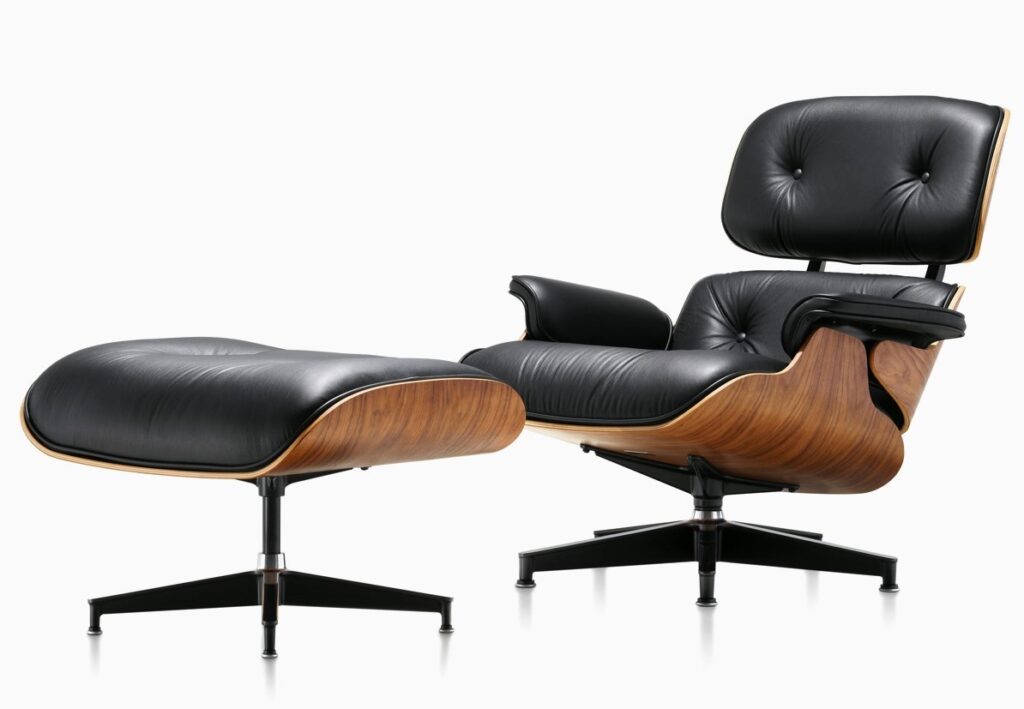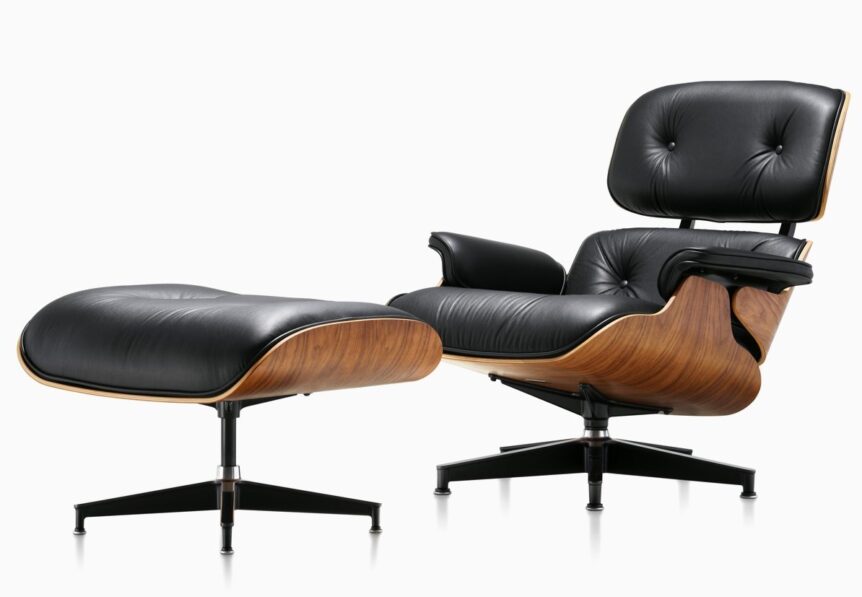See the reasons why mid-century modern furniture has been increasing in price and is now so expensive

Mid-century modern furniture is trending and has been steadily increasing in popularity over the last 10 years as people look to add a touch of class to other homes. And you can see why – It has stylish appeal based on minimum clean lines, is timeless which means it fits with most decors and is built to last.
However, this surge in popularity has also meant the prices for mid-century modern furniture have been steadily increasing to levels comparably to some pieces of expensive art.
So why is mid-century modern furniture so expensive?
Mid-century modern furniture is relatively expensive for a number of reasons which include a lack of supply and increased demand, niche collectors seeing mid-century furniture as an investment pushing up prices across the board and because of the superior build quality and craftsmanship of furniture in this era compared to a lot of modern replicas.
In this article, I will go into more detail about why mid-century furniture is now so expensive by looking at the reasons I’ve summarised above.
Contents:
- Sustainability
- Craftsmanship & Quality
- Supply & Demand
- Collectors
- Most valuable mid-century furniture
1. Sustainability
There has been a massive drive by climate change groups and governments over recent years to get consumers and businesses to be more sustainable and change the way we make and consume products.
A 2020 consumer spending report by Insight, found a growing demand from consumers for sustainable models across all age cohorts with Gen Z in particular (people born between 1995 – 2012) making more purchase decisions based on sustainable retail practices.
For furniture, this has meant people are buying fewer new items and are instead turning to more sustainable options by upcycling, recycling, repurposing and buying more second-hand items from places like Facebook Marketplace, Etsy and the host of vintage shops popping up in towns and cities.
Within this mix, furniture made between the 1940s and 1960s in the mid-century modern tradition has become particularly popular, as it is not only seen as more eco-friendly than flat-packed furniture but also has an aesthetic appeal that fits with contemporary homes.
2. Craftsmanship & Quality
A lot of home furniture made today is often mass-produced, made from low-quality materials such as MDF with laminate finishes which is a thin layer of synthetic material, usually plastic made to look like wood.
Manufacturers who made mid-century furniture in the 1950s and 60s on the other hand placed an important emphasis on design, craftsmanship and quality and were handcrafted and made by cabinet makers who often had trained for 20-30 years in the field of joinery.
Items of furniture were also often made from solid wood, such as teak, rosewood and elm. Even items that were made using a wooden veneer (a thin sheet of high-quality wood, laid over cheaper cuts) were usually made to a high quality.
It, therefore, makes sense if a product is made with superior craftsmanship and quality it will be more expensive than more inferior products.
3. Supply & Demand
The fact of the matter is lines of high-quality furniture made over 50 years ago in the 1950s and 60s are not being made anymore and a lot of the manufacturers that produced these items actually no longer exist.
G-plan produced some innovative mid-century furniture from 1953 but collapsed in 2005 and was acquired by Sofa Brands International in 2015 and now mainly makes sofas and armchairs. Scottish manufacturers Macintosh ceased making home furniture in 2004 and now focuses solely on school furniture. And Jentique who was known for making beautiful sideboards and cabinets only made furniture for a brief period between the 1950s and 70s.
This lack of supply (also known as scarcity) is coupled with the huge surge in demand for mid-century furniture over the last 10 years.
This is a graph taken from google trends for the search term “mid-century modern” for the United Kingdom. As you can see there has been a steady increase in the interest over time from around 2011 to 2022 in the number of people who have been searching online for mid-century modern.
This increase in demand for mid-century furniture can be partly explained by the millennial and gen z cohorts as they are more likely to embrace the sustainability agenda and look for new outlets for individual expression.
Both the lack of supply in used mid furniture and the increasing demand are in part driving up the cost of and is increasingly making it more expensive.
4. Collectors
Since the 1990s there has been a niche group of collectors that have been up buying items at the higher end of the mid-century furniture market and early examples such as furniture made by Charles Eames, George Nelson and George Nakashima furniture, are being snapped up for thousands of dollars.
An original 1960s Charles Eames lounge chair and footstall set is now going from £4000 all the way up to £27000 and a George Nakashima “Origins” Bedroom Set sells for a whopping £46000.
Mid-century furniture is also becoming more connected to the contemporary art world which turns collectors into investors as they see it as a smart investment in the hope items of furniture will continue to increase in value.
Holdeman of Sotheby’s suggests mid-century furniture is increasingly complementing the contemporary art movement because furniture made in this period was designed to be timeless and goes much better with modern art than pieces made in previous eras (think Georgian or Victorian).
This has therefore driven up prices not only at the higher end of the market but across the board. Pieces of mid-century furniture such as sideboards, made by a well-known manufacturer could be brought for under £100 only five years ago but are now selling for £1000 and above.
5. Most valuable mid-century furniture
It’s hard to give examples of the most valuable individual items of mid-century furniture as there will be many factors that influence its worth such as its condition, the materials used to produce it and how it was made.
However, identifying manufacturers’ and designers’ names from this era is a much more effective way to find out some of the most expensive items on the market.
I’ve split manufacturers into three separate tiers (low, mid & high tiers) as this gives you a better overview of some of the most expensive brands within each price bracket.
Low-end (£500 – £1000)
Brand names:
- Macintosh
- Stag
- Jentique
- Schrieber
- Stonehill
- Lebus
- Parker Knoll
- Broyhill
- Drexel
Mid-range (£1500 – £5000)
Brand names:
- George Nelson
- Ray & Charles Eames
- Michel Ducaroy
- Giò Ponti
- Henry Vaughan
- De Sede
- Pierre Paulin
- Vittorio Dassi
- Maurizio Tempestini
High end (£5k +)
Brand names:
- Alfred Hendrickx
- Rene Gabriel
- Guillerme and Chambron
- Raoul Guys
- Van Den Berghe Pauvers
- Geraldo De Barros
- G. Frattini Cassina
- Marco Zanuso
- Gianfranco Frattini
- Omann Jun Møbelfabrik
Source: 1stDibs
Related articles:
- How To Identify Mid Century Modern Furniture
- How To Value Mid Century Modern Furniture
- 9 Best Vintage Furniture Brands
Key Takeaways
Mid-century modern furniture has been trending up over the last 10 years which means across the board from low to high end it is now considerably more expensive and is sometimes on par with pieces of mid-range contemporary art.
This increase in price can be explained in large part by the lack of supply and increase in demand. There is a finite supply of mid-century furniture as it’s not being made anymore and a lot of the manufacturers no longer exist. At the same time, people are looking for products for their homes that are both sustainable and fit in with contemporary urban environments.
Another reason mid-century furniture is so expensive is it is simply better quality than a lot of modern furniture as a greater empathise was placed on quality and craftsmanship with many pieces created by hand.
You can still find some reasonably priced pieces on places like Facebook Marketplace (I brought a Nathan sideboard for £70 which is being sold on other platforms for £800 +) but the demand is unlikely to wane anytime soon which means prices will continue to rise.


